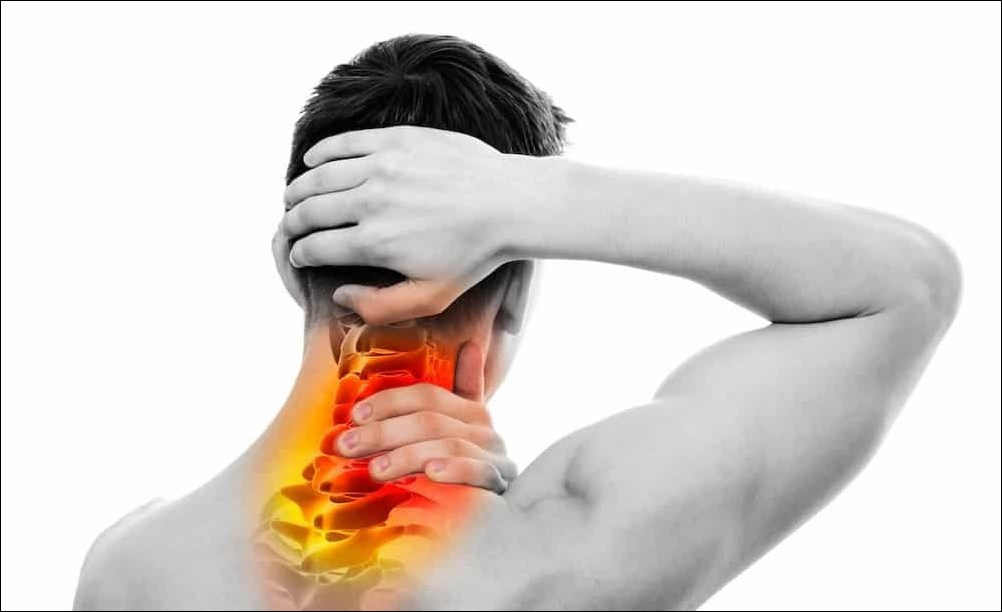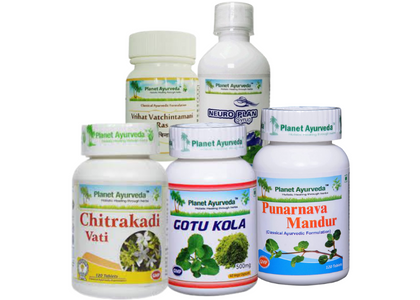WHAT IS WHIPLASH INJURY? HOW IT CAN BE TREATED WITH SAFE AYURVEDIC MEDICINES
ABSTRACT
The musculoskeletal system is the structural support system of the body. These are important for maintaining the shape of the body. The muscles and bones support proper movements in the body. An injury to this system can result in painful consequences. There can be various kinds of injuries depending on the type and location of the affected area. One such type of injury is the whiplash injury. The whiplash injury will be explained along with its causes, features and management according to both the modern and ayurvedic system of medicines.

INTRODUCTION
Whiplash injury, as the name suggests, resembles the cracking of a whip. It is an injury of the neck as a result of rapid back and forth movement. Whiplash injury can occur most commonly in road traffic accidents but there can be various other causes also which will be discussed later. The probable prognosis of whiplash injury suggests that the condition gets better within a few weeks with appropriate medical management. However, some may face chronic neck pain and other long term difficulties. Let us know the causes and symptoms of the whiplash injury.
CAUSES
As described earlier, whiplash injury is a result of rapid back and forth movement of the neck. This type of rapid motion can injure the tendons, ligaments, bones in the spine, muscles, nerves and other tissues of the neck. The causes of whiplash injury will include road accidents, extreme physical abuse or sport related collisions, etc.
SYMPTOMS
The clinical features of the whiplash injury may include a variety of symptoms, some of them include the following –
- The person experiences pain and stiffness in neck
- This pain may worsen with movement and the range of motion is also restricted.
- Headaches are experienced with the pain starting usually at the base of the skull.
- He/she may also complain of tenderness or pain in the upper back, arms or shoulder.
- Fatigue and dizziness are also observed along with the above mentioned features.
- Tingling sensation or numbness is also experienced in the arms.
DIAGNOSIS
The diagnosis of any disease requires both, the detailed medical history along with the investigations. After observing the above symptoms and a history of trauma or injury, one must go for one or more imaging tests. The imaging tests may include X-rays, Computed tomography (CT), MRI (magnetic resonance therapy), etc. After a confirmatory diagnosis is prepared, a person must go for a proper medicinal management. The management of whiplash injury will be described as follows.
TREATMENT OF WHIPLASH INJURY
The medical management of the whiplash injury will aim at controlling the pain, improving the range of motion in the neck and improving the quality of life. To achieve these aims, there are various therapies and measures employed. The patient is advised to rest for a day or two after the injury. Heat and cold therapy will also help manage pain. The medicines useful in this case will include analgesics or pain relievers. These will be beneficial for mild to moderate pain. In severe cases, antidepressants may be required along with muscle relaxants. Exercise and physical therapies are also useful in the whiplash injury.
AYURVEDIC ASPECT
The whiplash injury can be correlated with the following scenarios in the ayurvedic perspective –
The whiplash injury can be considered under the category of agantuj roga. Agantuj roga are diseases in which there is strong external force that deplete or hinders the balance between the internal elements such as vata, pitta, kapha. The abhigataj is also one such type, abhigata or injury leads to vata aggravation in the body. This vitiated vata presents a variety of symptoms. These symptoms may include pain, and uneasiness or pricking pain in the affected area. It has similarities with greeva shoola also, as greeva school refers to pain in the neck and in whiplash injury, the patient experiences pain also. The main line of management in the whiplash injury will include balancing the vitiated levels of vata dosha back into the normal levels. This aim can be achieved through various ayurvedic formulations which will be described as follows.
HERBAL REMEDIES BY PLANET AYURVEDA FOR WHIPLASH INJURY
Planet Ayurveda is providing various preparations of natural herbs which are formulated using authentic ways and provide great results in improving the condition of whiplash injury. All the herbal products manufactured here are free from chemicals, preservatives, starch, additives, colors and fillers. These products are hundred percent natural and are formulated by MD Ayurvedic doctors with deep knowledge of Ayurveda and many years of experience. The ayurvedic formulations beneficial for the condition of whiplash injury are described as follows.
Product List
- Lakshadi Guggul
- Yograj Guggul
- Boswellia Curcumin
- Neurogenie Capsules
- Aamvatantak Churna
Product Description
1. Lakshadi Guggul
Lakshadi guggul prepared by planet ayurveda contains natural extracts of various beneficial ayurvedic herbs such as arjun (Terminalia arjuna), ashwagandha (Withania somnifera), guggul (Comiphora mukul), etc. This will help to improve the condition of bones, ligaments and muscles of the body. It contains a combination that is beneficial for pacifying the aggravated vata dosha from the body. The use of yograj guggul improves the state of the musculoskeletal system and hence improves the range of movement also. Thus, it improves the healing in whiplash injury.
Dose – Two tablets two times a day after meals.
2. Yograj Guggul
Yograj guggul is a very effective ayurvedic formulation. It contains a combination of beneficial ayurvedic components such as chitrak (Plumbago zeylanica), ajmoda (Trachyspermum roxburghianum), gokshura (Tribulus terrestris), etc. Yograj guggul helps to pacify the aggravated vata dosha from the body. This helps to improve the bone and joint health of the body. This will also help to manage the pain and inflammation in the cases of whiplash injury.
Dose – Two tablets two times a day.
3. Boswellia Curcumin
Boswellia curcumin capsules are being prepared by Planet ayurveda. It contains a combination of haridra (Curcuma longa) and shallaki (Boswellia serrata). These components help to manage the pain sensations experienced by the patient of whiplash injury. Curcumin is a very effective anti-inflammatory agent and therefore, useful in managing the inflammation also. Boswellia curcmin helps to improve the joint and muscle health of the body.
Dose – One capsule two times a day.
4. Neurogenie Capsules
Neurogenie capsules are formulated by ayurvedic experts in planet ayurveda. It contains two wonderful ayurvedic herbs namely brahmi (Bacopa monnieri) and ashwagandha (Withania somnifera). These two herbs are known to be very effective and beneficial for the nervous system. They help to pacify the excessive vata dosha and also provide strength to the nerves, thus improving the pain and inflammation also. This will help to promote the overall health of the patient.
Dose – One capsule to be taken two times a day, after meals.
5. Aamvatantak Churna
Aamvatantak churna is being prepared by Planet ayurveda. This churna contains powdered form of various medicinal herbs such as Ashwagandha (Withania somnifera), Methi (Fenugreek), Haridra (Curcuma longa), Sonth (Zingiber officinale), etc. The combinations of these drugs help to balance the vata dosha of the body. This will help to improve the pain sensations and also the general well-being of the patient suffering from whiplash injury.
Dose – 1/2 tsp twice daily with warm water
CONTACT PLANET AYURVEDA TO PROVIDE YOU THE COSTING / ORDERING AND DELIVERY INFORMATION AT – COSTING.PLANETAYURVEDA@GMAIL.COM OR CALL AT +91-172-5214040
CONCLUSION
So, in a nutshell, all the above described information can be compiled and it can be concluded that the whiplash injury can be managed effectively with the appropriate use of ayurvedic formulations. The ayurvedic principles believe to rectify the disease right from its roots rather than just managing the symptoms. So, by restricting the causative or aggravating factors and following a healthy diet along with the administration of ayurvedic formulations (as described above), the condition of mixed expressive-receptive disorder whiplash injury can be managed effectively.





